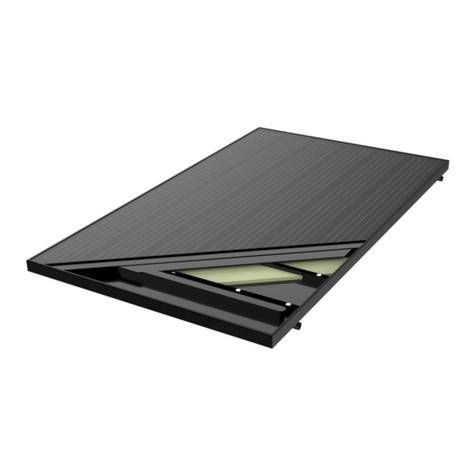
Table of Contents
1. Introduction .................................................................................................................................. 3
1.1. General safety instructions .................................................................................................. 3
1.2. General standards to be observed ....................................................................................... 3
1.2.1. Photovoltaic solar standards .................................................................................... 3
2. General description ....................................................................................................................... 5
2.1. Technical characteristics ..................................................................................................... 5
2.2. General recommendations .................................................................................................. 5
2.2.1. Handling ................................................................................................................. 5
2.2.2. Transport ................................................................................................................ 5
2.2.3. Storage ................................................................................................................... 5
2.3. Technical considerations ..................................................................................................... 5
2.3.1. Static roofing requirements ...................................................................................... 6
2.3.2. Angle of inclination .................................................................................................. 6
2.3.3. Wind and snow load ................................................................................................ 6
2.3.4. System location ....................................................................................................... 6
2.3.5. Types of mounting ................................................................................................... 7
2.3.6. Protection against fire / explosion ............................................................................. 7
3. Mechanical installation .................................................................................................................. 8
3.1. Installing DualSun modules ................................................................................................. 8
3.2. Assembly specifications .................................................................................................... 10
3.2.1. Installation areas on the rails of the mounting system .............................................. 10
4. Electrical Installation .................................................................................................................... 11
4.1. Electrical connection .......................................................................................................... 11
4.2. Electrical fittings, cables and diodes .................................................................................. 12
4.3. Grounding and lightning protection .................................................................................... 14
4.4. Indirect lightning strike ...................................................................................................... 14
5. Cleaning the surface of the modules ............................................................................................. 16
6. Decommissioning of the installation .............................................................................................. 17
6.1. Removing a module ......................................................................................................... 17
6.2. Waste treatment ............................................................................................................... 17
7. Responsibilities ........................................................................................................................... 18
7.1. Guarantee conditions ....................................................................................................... 18
7.2. Disclaimer ........................................................................................................................ 18
Installation, use, maintenance manual DualSun FLASH
2




























